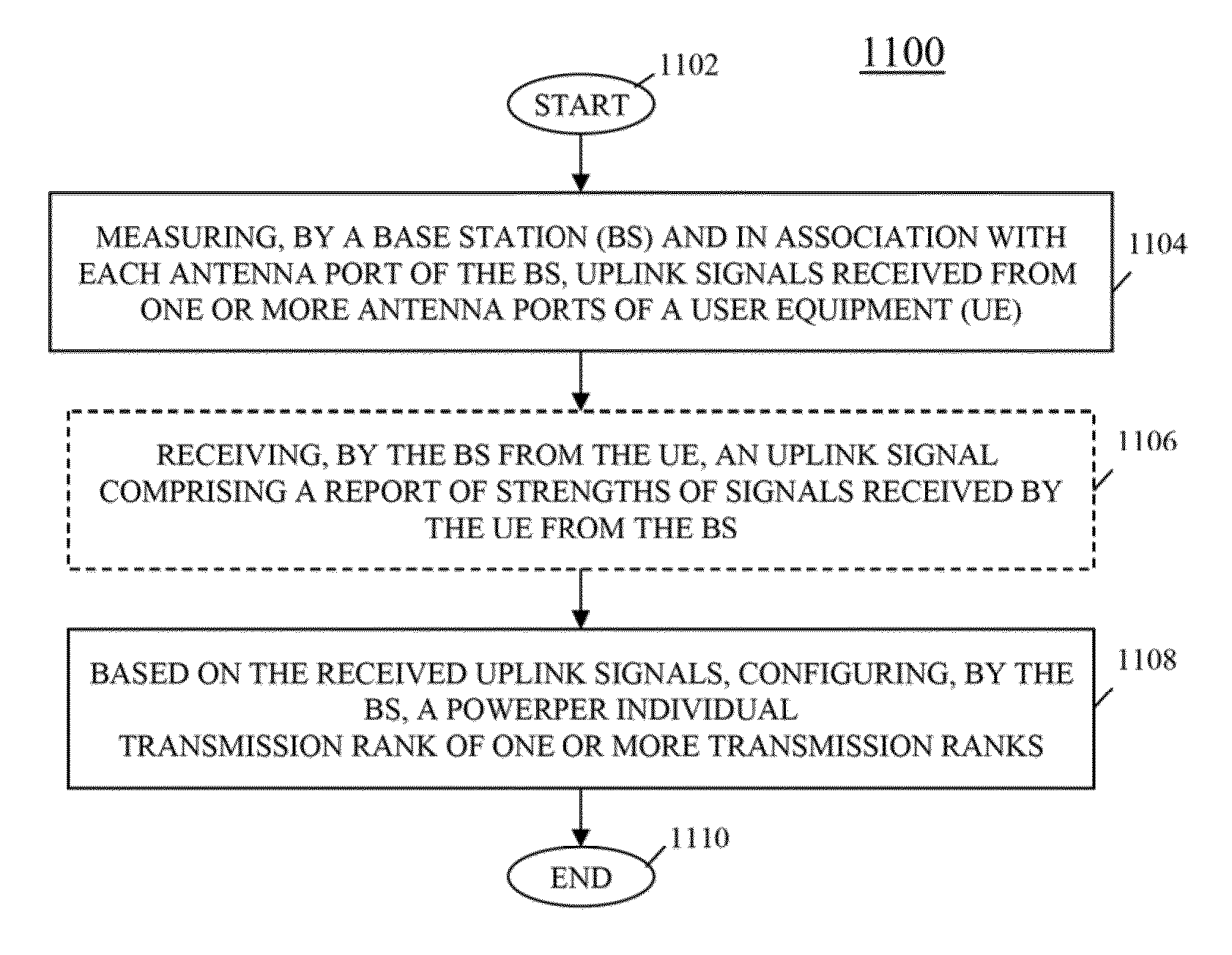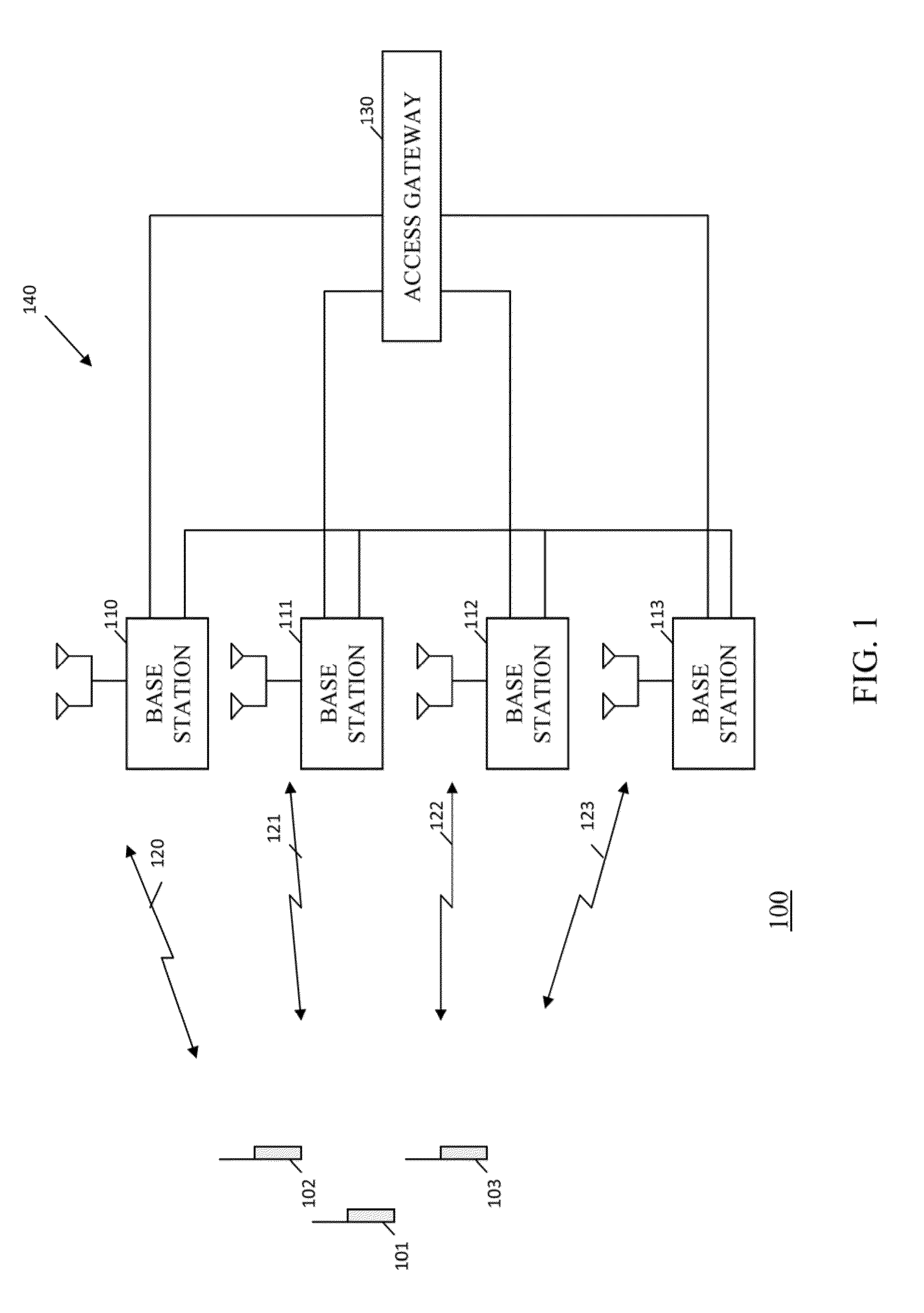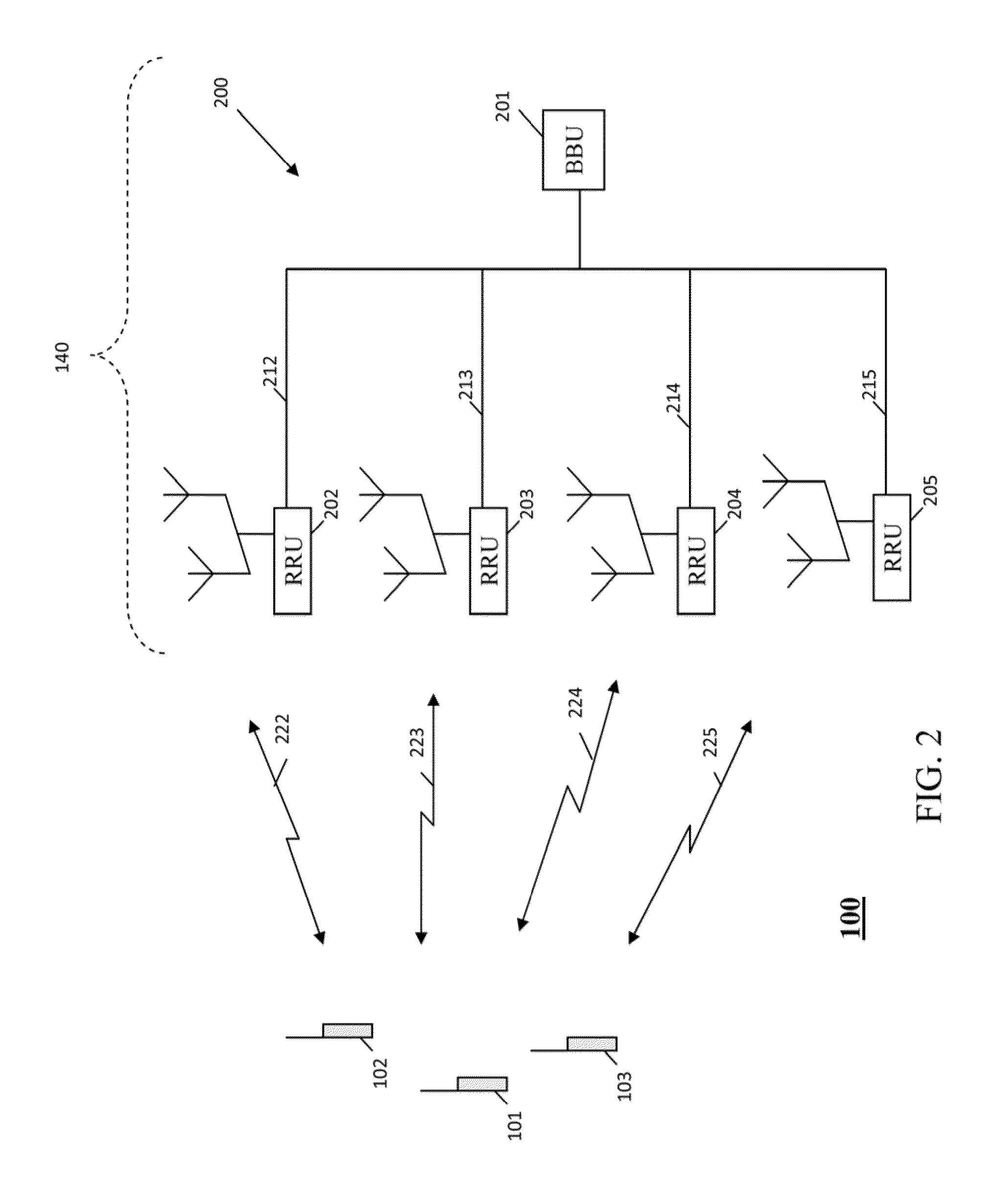Method and apparatus for rank adaptation in an orthogonal fequency division multiplexing communication system
a technology of orthogonal frequency division and rank adaptation, applied in frequency-division multiplexing, site diversity, instruments, etc., can solve problems such as different path loss of u
- Summary
- Abstract
- Description
- Claims
- Application Information
AI Technical Summary
Benefits of technology
Problems solved by technology
Method used
Image
Examples
Embodiment Construction
[0026]In order to address the need for a proper determination of rank and PMI when a user equipment (UE) may be served by multiple geographically diverse antenna ports, a communication system is provided that allows for adaptive rank determination, for example, a rank 2 transmission in instances where a rank 1 transmission may be indicated under supported feedback modes in the current standards where no explicit power adaptation can be assumed, for example, where a UE is limited to reporting a rank 1 channel due to a large dynamic range of a signal and associated receiver impairments or due to self-interference of transmissions to the UE and a signal received by the UE from one BS antenna port drowning out a signal received by the UE from another BS antenna port. The communication system provides for the UE to implement rank 2 transmission in such instances by using per-antenna port power control at a base station (BS) serving the UE. In one embodiment, the BS controls the rank dete...
PUM
 Login to View More
Login to View More Abstract
Description
Claims
Application Information
 Login to View More
Login to View More - R&D
- Intellectual Property
- Life Sciences
- Materials
- Tech Scout
- Unparalleled Data Quality
- Higher Quality Content
- 60% Fewer Hallucinations
Browse by: Latest US Patents, China's latest patents, Technical Efficacy Thesaurus, Application Domain, Technology Topic, Popular Technical Reports.
© 2025 PatSnap. All rights reserved.Legal|Privacy policy|Modern Slavery Act Transparency Statement|Sitemap|About US| Contact US: help@patsnap.com



